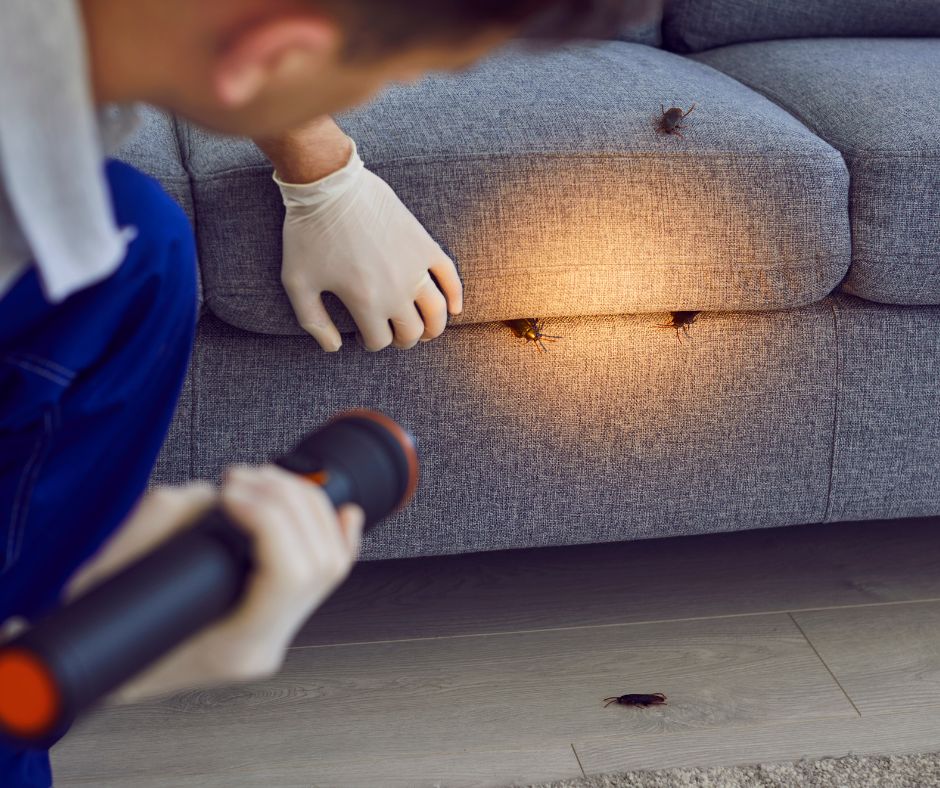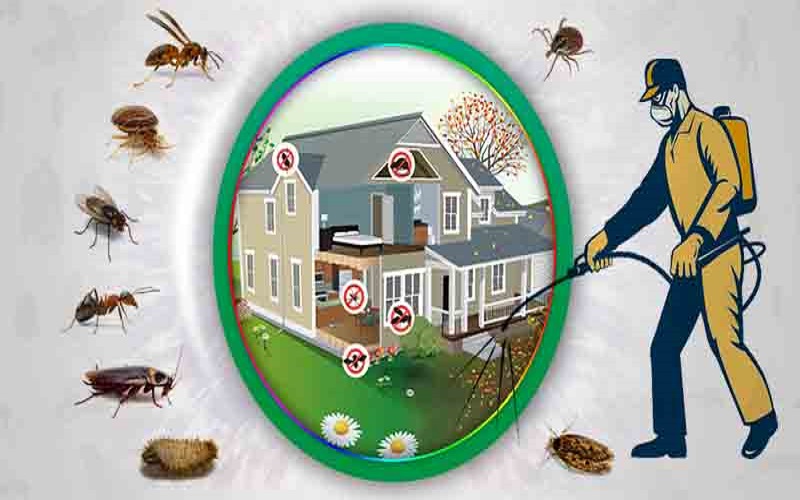Cost-effective and Trusted Exterminator in Port Charlotte for All Your Pest Control Issues
Find Out About the Latest Breakthroughs in Parasite Control and Exactly How to Implement Effective Therapy Solutions
In recent times, the area of insect control has experienced significant developments, driven by the need for sustainable and effective treatment services. Ingenious techniques such as Integrated Parasite Monitoring (IPM) combine environment-friendly methods with innovative innovation, improving both effectiveness and ecological duty. The integration of clever modern technologies and Do it yourself techniques has empowered people to take on insect problems more effectively. As we discover these advancements, it ends up being important to understand just how finest to execute these techniques in numerous settings to achieve optimum outcomes. The implications for parasite management practices can be transformative.
Eco-Friendly Parasite Control Options
Over the last few years, the need for eco-friendly insect control choices has actually risen as home owners and companies alike look for lasting alternatives to conventional chemical treatments. This shift is driven by expanding ecological recognition and a need to minimize the wellness dangers connected with artificial chemicals.

Environmentally friendly insect control methods incorporate a series of methods that prioritize the use of all-natural compounds and practices. Integrated Pest Monitoring (IPM) is one such technique, integrating biological, social, and mechanical methods to handle insect populaces while lowering dependence on chemicals (Wildlife removal services). This holistic approach highlights avoidance through habitat adjustment and the introduction of all-natural predators, therefore fostering a balanced ecological community
One more preferred choice is using herb pesticides stemmed from plants, which tend to be much less damaging to non-target microorganisms. Products like neem oil and diatomaceous earth have actually acquired grip for their effectiveness in regulating pests while positioning minimal dangers to human health and the atmosphere.
In addition, exclusion techniques, such as securing entry factors and keeping cleanliness, play a crucial duty in green insect management. By taking on these sustainable techniques, individuals and organizations can successfully handle bugs while promoting a healthier planet for future generations.
Smart Innovation in Parasite Management
Development is improving the landscape of bug monitoring, with smart technology emerging as a critical pressure in boosting performance and performance - Wildlife removal services. The integration of Internet of Points (IoT) gadgets, man-made knowledge (AI), and information analytics is changing just how pest control professionals approach infestations
Smart traps geared up with sensors can detect insect activity in real-time, sending immediate signals to drivers. This enables prompt actions, lessening damages and decreasing the requirement for considerable treatments. Furthermore, AI algorithms evaluate historic data to predict pest behavior, making it possible for aggressive treatments based upon environmental conditions and problem patterns.
Drones and computerized automobiles are likewise playing a considerable function in insect management, giving airborne evaluations of large locations, recognizing hotspots, and even distributing targeted therapies. These innovations not only streamline procedures however also boost safety by limiting human direct exposure to potentially harmful chemicals.
In addition, mobile applications equip customers to keep an eye on insect task and gain access to expert recommendations, cultivating a collaborative technique to pest management. Overall, the adoption of clever innovation is setting a new standard in pest control, highlighting data-driven choices and sustainable methods that ultimately profit both house owners and specialists alike.
Integrated Insect Management Techniques
Integrated Insect Management (IPM) employs an alternative strategy to pest control, combining various methods to effectively handle insect populations while lessening dangers to human health and wellness and the atmosphere. IPM focuses on recognizing the pest life process, their all-natural adversaries, and the ecosystem in which they flourish.
Among the basic elements of IPM is monitoring pest populaces through routine evaluations and information collection. This permits the identification of insect thresholds, determining when intervention is needed. Social methods, such as crop environment, turning, and hygiene manipulation, are important in lowering pest prevalence and advertising plant health.
Mechanical controls, including obstacles and catches, why not try this out are likewise crucial in IPM. These methods can literally eliminate or hinder parasites without making use of chemicals. When essential, the cautious application of chemical controls is used, concentrating on targeted treatments that reduce environmental effect.
Education and partnership among stakeholders, consisting of farmers, pest control experts, and the neighborhood, are crucial for the effective implementation of IPM techniques. By focusing on sustainable methods, IPM not only addresses pest problems but also fosters a healthier community.
Biological Control Techniques
Various organic control techniques are increasingly identified for their performance in taking care of insect populations while advertising eco-friendly equilibrium. These techniques harness all-natural predators, bloodsuckers, and microorganisms to reduce pest numbers without counting on synthetic chemicals. For example, the introduction of ladybugs can successfully control aphid populaces, while nematodes target soil-dwelling pest larvae.
In addition, using microbial chemicals, such as Bacillus thuringiensis (Bt), gives an eco pleasant choice for managing caterpillar insects. These products specifically target pest varieties, minimizing injury to useful pests and pollinators. Preservation biological control emphasizes enhancing environments for all-natural enemies, such as birds and helpful pests, thus motivating their presence in agricultural systems.
Research proceeds to expose ingenious methods within this field, such as the usage of pheromones to disrupt pest mating patterns or the advancement of biocontrol representatives through genetic modification. Applying these methods can lead to sustainable insect management methods that alleviate the reliance on chemical treatments, ultimately promoting healthier communities. As recognition of these strategies grows, they are ending up being essential parts of integrated insect administration (IPM) methods, using an equilibrium in between reliable insect control and ecological stewardship.
Do It Yourself Parasite Control Solutions
As home owners look for effective means to tackle bug problems, DIY pest control options have gotten appeal for their availability and cost-effectiveness. These approaches equip people to address problems using readily offered materials and strategies, often without the need for specialist intervention.

Furthermore, keeping proper cleanliness and routine inspections can stop pest access and nesting (Wildlife removal services). Basic practices, such as sealing splits, getting rid of food sources, and decluttering, can considerably decrease pest populaces. Traps, both homemade and readily offered, can also offer effective remedies for tracking and managing details parasites like rats or pests

Verdict
The assimilation bee removal of eco-friendly insect control options, smart innovation, and innovative administration strategies provides a detailed approach to efficient bug monitoring. By welcoming Integrated Pest Management (IPM) and using biological control techniques, together with DIY solutions, sustainable and accountable bug control can be accomplished.
Environment-friendly insect control methods include an array of approaches that focus on the use of natural compounds and practices. Integrated Parasite Management (IPM) is one such method, incorporating organic, social, and mechanical strategies to manage pest populations while minimizing dependence on chemicals. As awareness of these strategies grows, they are becoming integral components of incorporated insect management (IPM) techniques, providing a balance in between reliable pest control and environmental stewardship.
The assimilation of eco-friendly bug control options, smart modern technology, and ingenious administration techniques offers a thorough method to effective parasite administration. By embracing Integrated Pest Monitoring (IPM) and using biological control methods, together with Do it yourself remedies, accountable and lasting insect control can be accomplished.